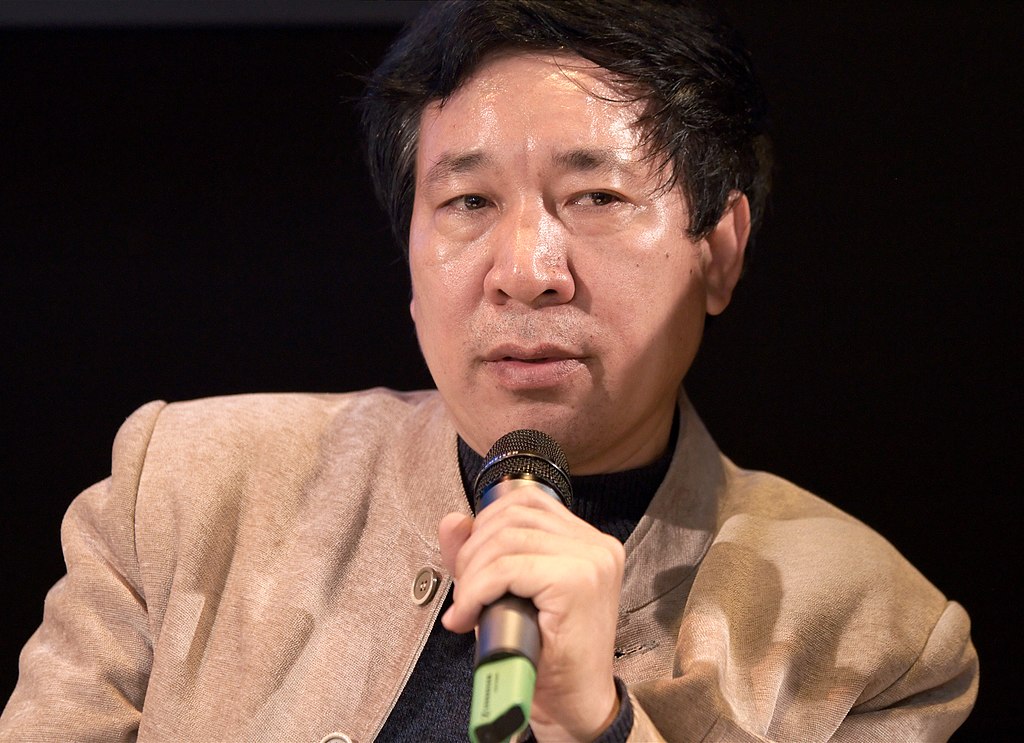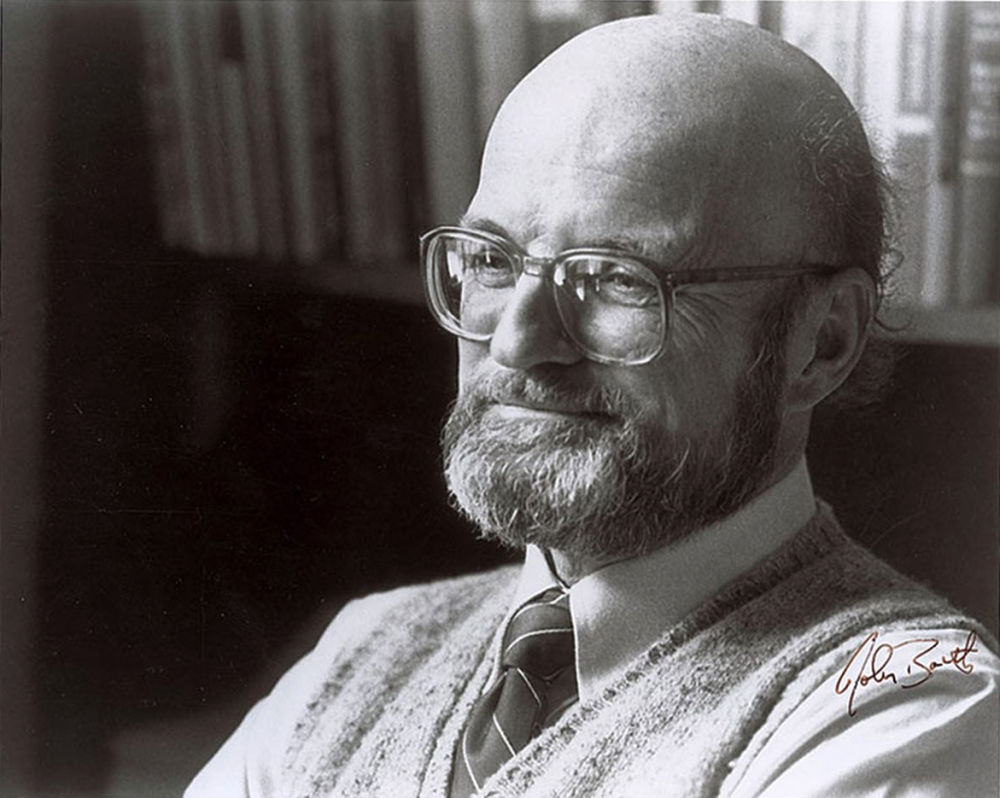Issue 142, Spring 1997
Wendy Wasserstein was born in Brooklyn, New York on October 18, 1950, the youngest of four children. Her mother, an amateur dancer, grew up in Poland and moved to the United States when her father was suspected of being a spy. Wasserstein’s father was a textile manufacturer. When she was eleven, the family moved to the Upper East Side of Manhattan, where she attended a series of young women’s schools before enrolling in Mount Holyoke College.
Wasserstein received her B.A. from Mount Holyoke in 1971 and earned her M.A. from New York’s City University in 1973, where she studied creative writing with Israel Horovitz and Joseph Heller. The same year saw Wasserstein’s first professional production, her play Any Woman Can’t, was presented by Playwrights Horizons, a small off-Broadway theater that has played a large role in her career. But it was at the Yale School of Drama, in which she enrolled the next year, that Wasserstein found her métier as a playwright. She was the lone woman among a dozen men studying playwriting—a “kind of bizarre macho class,” her classmate and friend Christopher Durang remembers it. “There were an awful lot of would-be Sam Shepards, and Wendy felt a little left out.” At the first reading of her play Uncommon Women and Others, a male classmate complained, “I just can’t get into this.” The play was later filmed as part of PBS’s Theatre in America series.
After receiving her M.F.A. from Yale in 1976, Wasserstein returned to New York, where she has lived ever since. During the next several years, her plays were produced in various off-Broadway theaters. Her eighth play, The Heidi Chronicles, was produced off Broadway by Playwrights Horizons; in 1989, within weeks of moving to Broadway, the play won both the Pulitzer Prize and the Tony Award for best play. Her next play, which was produced in 1992, was The Sisters Rosensweig. Wasserstein has also written a collection of essays, Bachelor Girls; a children’s book, Pamela’s First Musical; and several screenplays—although she considers these things that happen while she is “waiting for the next play.”
Soon after The Sisters Rosensweig opened on Broadway, we met in the breakfast room of Wasserstein’s apartment overlooking Central Park in New York City. “I don’t use it much; I’m not good enough,” she laughed. A second interview was conducted this spring during rehearsals for her latest play An American Daughter.
INTERVIEWER
What do your sisters think of The Sisters Rosensweig?
WENDY WASSERSTEIN
I didn’t show anyone in my family the play. The problem with writing plays is that everyone has an opinion. And you don’t want those opinions. You want people to say I love you no matter what. I’m a forty-two-year-old woman. What would my mother say: Oh, it’s nice Wendy, and I notice the mother is dead? I really didn’t want any of them to see it until the opening, but my sister Sandy kept saying she wanted to come, so finally I said, You can come but you can’t call me tomorrow and make any comments, because if you call me and don’t say anything, I’ll know you think it’s bad. So no comment, either way. She saw it and sent me flowers the next day. They came with a note that said, No Commitment. I realized that either the florist had made this Freudian slip or he was the florist to some Upper West Side bachelor who regularly sends out “no commitment” flowers.
But my mother is indefatigable. I hear her talking to my nieces and saying things like, You want to marry young. You know, you don’t want to grow old like Wendy. She’s fascinating. She is not a schooled person—my grandfather wrote plays and was the head of a school district in Poland, but my mother went to high school in New Jersey and then stopped. But she is deeply funny and, for someone who has not read, verbal and witty and an original thinker. She never cooked and she took great pride in having no skills at all. She had four children and then my two cousins came to live with us. And she danced. By the time I got to high school she was going to dancing lessons. That woman is over eighty and she’s still dancing. Her name is Lola and when she walks down the street, chorus boys stop her to say hello. She wears leather! She’s older now and so looks more like a grandmother, but if you had hit her when I was in college—she was a number. She’s from that generation of mothers who had intelligence and creativity and no place to put that except into family. If the circumstances were different I’m sure she would have been a dancer or set designer. She thinks she’s marvelous in every way. If you said, Wendy is so talented, she’d say, Of course, she’s my daughter. My love of the theater comes from her.
My dad doesn’t talk very much. He’s very gentle and sweet, and my suspicion is that he’s extremely bright and reflective. He invented the process that put wires into ribbons, which I guess is a little like being a furrier. They are really a yin and yang, those two.
INTERVIEWER
Did you have fun growing up?
WASSERSTEIN
I did because my mother was eccentric. In Brooklyn a lot of mothers really did play mah-jongg and have their hair done. My mother looked like Bertolt Brecht when I was growing up. She had extremely short hair. She’d say to the hairdresser on Kings Highway, You know how I like it, so it looks like you made a mistake. When I went to yeshiva, the rabbi’s daughter would come to dinner and my mother would give us hamburgers and string beans with butter sauce. You’re not supposed to have milk with meat and she’d lie and say it was lemon juice.
Also, being so close to my brother was fun; we went exploring a lot. My sister Sandy got married when I was six. She was nineteen. My aunt Kiki fell through the floor at her wedding. She was dancing and fell through, which I thought was fabulous. Sandy eventually got divorced and went to live in England for eight years. She came back, and one day my mother had her pick me up from the June Taylor School of Dance. So there I was, a yeshiva girl, going to dance school on Saturdays; my mother had me lying to the rabbi about that. Between the lemon juice and the lying to the rabbi, I’m going straight to hell. Anyway, she told Sandy to take me to Howard Johnson’s and Radio City. So Sandy took me to the House of Chen where we had shrimp dishes—and I knew your lips fall off from the shrimp but I was too scared to tell her I can’t eat this. And then, instead of going to Radio City, she took me to see Expresso Bongo, which was one of those English art movies. I remember a scene where the girl was wearing kilts with suspenders and no top. And then Sandy made me lie about it all to my mother.
When I was in second grade, I made up a play that I was in; I told my mother that I was in this play and the lie got larger and larger. Finally, arbitrarily, I said my play is on tomorrow, and she got me a velvet dress and made my hair in ringlets, and off I went to school. And she came to school and there was no play. She covered for me and said, I must be confused; it must be another one of my children. Then she came home and told me I was a fibber. She must have yelled at me because to this day I have trouble with fibbing.
INTERVIEWER
Would you call The Sisters Rosensweig your first well-made play?
WASSERSTEIN
Yes, in terms of structure. When I see the play, I feel I’m seeing a Broadway play in 1958, or what I wish those plays had been. I remember going to them and thinking, I really like this but where are the girls? The Sisters Rosensweig is like those plays—the curtain goes up and there’s one set, and the play is well-made, you know, beginning, middle, and end. It takes place over a weekend, the stars get applause, the stars get exit applause, they each tell their stories, it arcs in the second act, all of that. It was much harder to write than any of my other plays.
INTERVIEWER
Did your other plays prepare you for it?
WASSERSTEIN
In a way. The Sisters Rosensweig seems a combination of Isn’t It Romantic and Uncommon Women. But those other plays are episodic and this was a deliberate decision not to be episodic. Also, I decided not to write another play about my generation. Even though it has autobiographical materials, the focus of the play is not me. I wanted to do all those things and also evoke a fondness for plays that I love, including Chekhov. On the day I finished it I thought, This was a lot of effort just to prove to myself what a good writer Chekhov is.
INTERVIEWER
You sound as if you didn’t get emotionally involved.
WASSERSTEIN
Ending The Sisters Rosensweig was hard, and when I finish plays I tend to get emotional and weepy. I remember the day I finished it I got weepy and then I realized it wasn’t right. When we were doing the workshop in Seattle, I got weepy again and I realized it still wasn’t right and I thought, How many times am I going to get weepy? Today in a taxi ride I was thinking that I would like to fix the speeches between Sara and Merv in the last scene. In the first draft, Sara sang for Merv. Then Merv sang “For Me and My Gal” in return. I was thinking, They slept together once and they’re singing and running off together? What kind of play is this?
INTERVIEWER
When Sara does sing for herself—that song about Moishe Pupick, about being the only Yiddish girl in MacNamara’s Band—it’s an amazing moment. Jewish audiences respond to Sara’s need to assimilate and her need not to. For a larger audience the moment is about identity and reconnecting with yourself after being lost for some time. When Sara first starts to sing those lyrics, the audience laughs because she’s singing Yiddish words. But it’s actually a deeply serious moment.
WASSERSTEIN
This play is thought of as a comedy, which is great, but to me this is a very serious play, and what you touched on in that moment is almost tonality, the heart of the play.
INTERVIEWER
One of the most moving moments in the play is when Gorgeous receives a real Chanel suit as a gift. Why is that so moving?
WASSERSTEIN
I think it comes from when I was in high school and I first realized there were people who wore real Papagallo shoes and then there were people who wore imitation Papagallo shoes from Chandlers. So I became very interested in this idea of what was real and what was imitation and what it felt like to wear the imitation and finally get the real.




